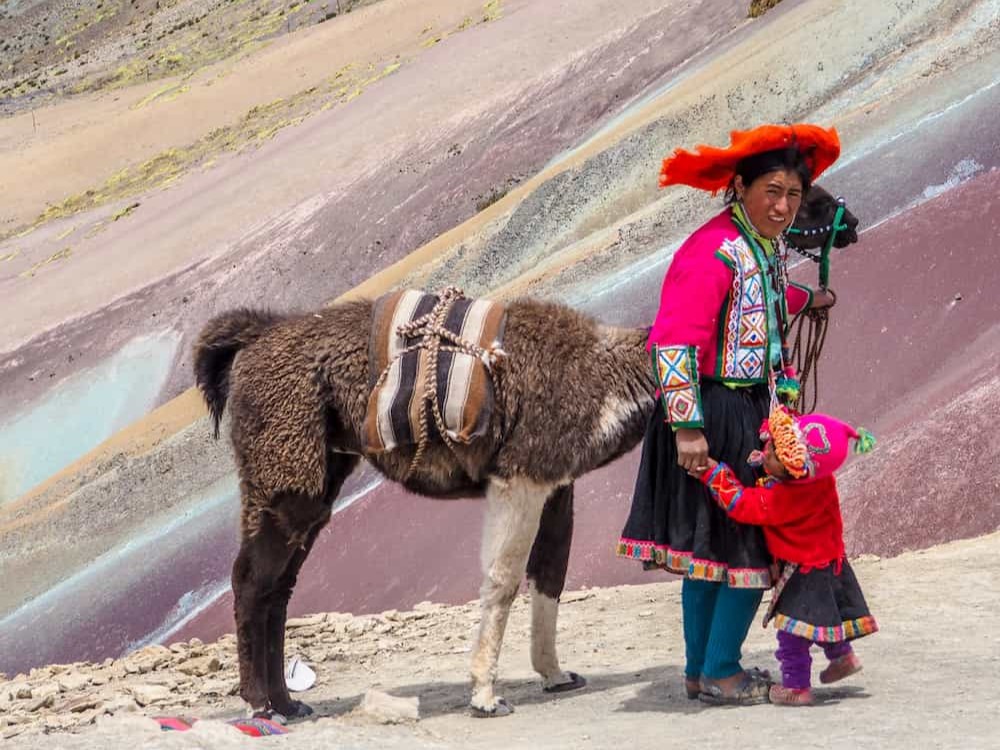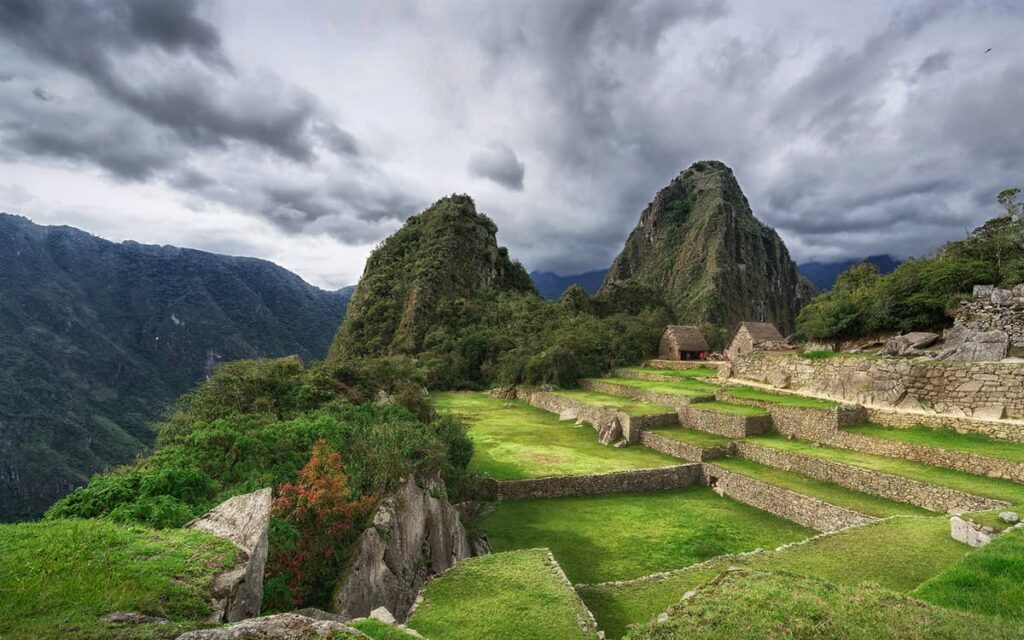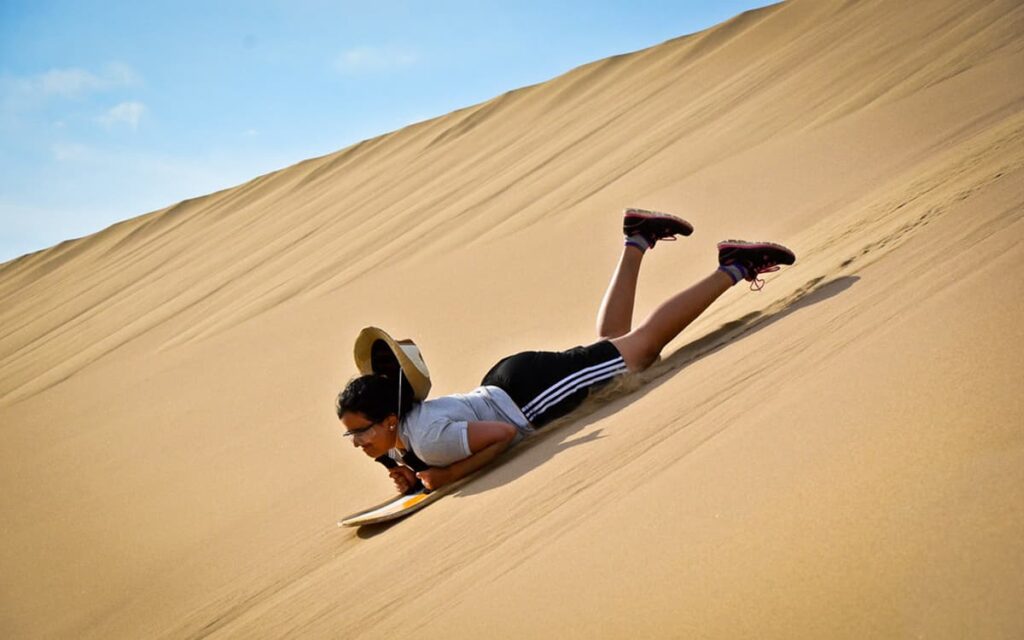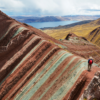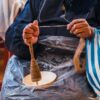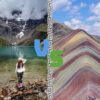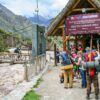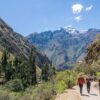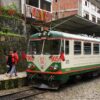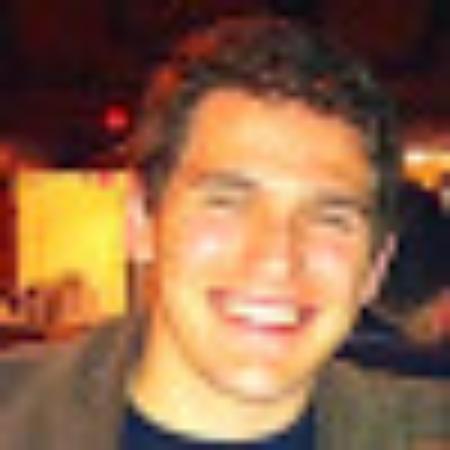San Blas, is today a central neighborhood of the cosmopolitan city of Cusco, known as the “Artists Quarter”, with narrow and twisted streets, most of them steep; in the Incario it was one of the most important in the city and its name was “T’oqo-kachi” (“t’oqo”: hollow, “kachi”: salt); this neighborhood like the others was inhabited by the Quechua nobility.
The neighborhood is located on the same site as the ancient Inca neighborhood of T’oqokachi. Its architecture is a continuous nave with a Latin cross plan, a simple façade and a belfry bell tower. It houses a rich pictorial collection where the series of the Cusco author Fabián Pérez de Medina stands out, on the life and miracles of Saint Blas, a martyr bishop. In addition, there are three chapels with their respective altarpieces, a sacristy, a chapel of the Blessed Sacrament, a deposit, a side altarpiece, a main altarpiece (all in the Baroque style) and a high choir with a stiffened rail.
Apparently the San Blas Church in Cusco was erected on an Incan sanctuary dedicated to the worship of the god «Illapa» which is composed of Thunder and Lightning.
It is believed that it was inaugurated in 1544, during the period of the second Bishop of Cusco, Fray Juan Solano, OP, although some other versions say that it was opened after 1559 by Viceroy Andrés Hurtado de Mendoza.
It was founded as an indigenous parish in 1572 on the initiative of the magistrate Juan Polo de Ondegardo, who chose the Tococache area, where the huacas of the Incas Huiracocha, Túpac Yupanqui and Huayna Cápac were located.
The primitive chapel of San Blas was built in 1562 in the city of Cusco. After the earthquake of March 31, 1650, it became one of the most important temples and began to be decorated with sumptuous works of art.
The current San Blas Church in Cusco was completely rebuilt after the 1650 earthquake, although it retains the typical appearance of the Indian parishes founded in the time of Viceroy Toledo. It is all made of adobe, with gabled roofs, and has a modest portal devoid of ornamentation.
Stand out within this monument, some artistic values ??such as a canvas of the resurrection of Lázaro, the work of the master Diego Quispe Tito and the world-renowned pulpit of San Blas, carved in Cusco cedar wood, made by an indigenous master where a exquisite exorption that shows a deep theological knowledge.
Location:
It is located in the old Inca neighborhood of “T’oqokachi”, in the Plazoleta de San Blas, in the middle of a neighborhood famous for its artisan traditions, in the Imperial City of Cusco.
Description:
It was one of the first parishes built in Cusco by order of Viceroy Francisco Toledo, whose initial construction was destroyed by the 1650 earthquake. The current church has a construction platform in the shape of a Latin Cross and a simple facade with Plateresque characteristics.
The greatest wealth of this San Blas Church in Cusco consists of its important collection of paintings, its splendid main altar and, especially, its famous pulpit in the Baroque style made of a single piece of cedar and considered the finest example of wood carving made in America. colonial. This work dates from the last third of the s. XVII and is attributed to Juan Tomás Tuyru Túpac.
Its structure was simple:
Its architecture is a continuous nave with a Latin cross plan, a simple façade and a belfry bell tower.
A rectangular floor plan and adobe walls, but after the 1650 earthquake it was partially reinforced with stone walls.
It has a door and two columns and a stone tower for the bell.
The most important quality of this tourist complex is that it contains a spectacular pulpit carved in cedar wood, which is the most surprising work of artistic carpentry in the Spanish Churrigueresque style. Its elaboration is attributed to the indigenous architect and sculptor Juan Tomás Tuyro Túpac who elaborated the main altarpiece of the temple, where an exquisite decoration is appreciated that shows a deep theological knowledge, also in the Churrigueresque style.
Some artistic values ??such as a canvas of the resurrection of Lazarus, the work of the master Diego Quispe Tito.
A rich pictorial collection where the series of the Cusco author Fabián Pérez de Medina stands out, on the life and miracles of Saint Blas, a martyr bishop.
There are three chapels with their respective altarpieces, a sacristy, a chapel of the Blessed Sacrament, a warehouse, a side altarpiece, a main altarpiece (all in the Baroque style) and a high choir with a stiff cove railing.
Attractions
The San Blas Church in Cusco has exquisite works of art highlighting, among them, its famous pulpit, which deserves a special study, as well as precious pictorial works from the Cusqueña School.
Interiors of the temple of San Blas
All the artistic and ornamental wealth of San Blas is concentrated in its interior, it is composed of a single nave covered simply with wood, its liturgical furniture was sponsored by Bishop Mollinedo, in whose ecclesiastical government the altarpieces and silverware were carved and even the famous pulpit, which is its greatest treasure. In 1676, the parish priest Juan Bravo de Dávila y Cartagena requested the making of several paintings on the life of Bishop San Blas, which still adorn the side walls. They are remarkable baroque compositions whose anonymous author was influenced by the style of Diego Quispe Tito. The end of the construction of the main altar and the altarpiece of the Virgen del Buen Suceso dates from that same period, which display Solomonic columns of elaborate work. Both were gilded by the indigenous teacher Juan Tomás Tuiru Túpac. Its silver fronts are also admirable, especially that of the Virgen del Buen Suceso, a masterpiece of Cusco silverware in the Mollinedo era.
The images in the temple of San Blas
Among the most notable religious images it is worth mentioning the two archangels of bombastic movement, in maguey and glued cloth. They are typical works of Cusco imagery from the 18th century and remind us of the ancestral skill of the artisans of San Blas. There are baroque columns and sculpted images of the four evangelists: Saint Matthew, Saint John, Saint Mark, and Saint Luke. In the central part is the sculpture of the «Immaculate Conception». On the thorax of the pulpit is the effigy of the Saint Patron of the parish: San Blas; with bishop clothes. Above this image is the coat of arms of Bishop Mollinedo y Angulo.
There are also the sculptures of the church’s doctors, San Bonaventure, Santo Tomás de Aquino, San Agustín, San Gregorio, San Jerónimo, San Bernardo and San Francisco. Finally, crowning the pulpit and supported by five archangels, is the sculpture of Saint Paul of Tarsus (a Cusco author affirms that it is Saint Thomas, and some others that it is Jesus) with a crucifix in his hand; before the feet of St. Paul there is a skull that is supposed to belong to the author of the pulpit.
The magnificent baroque pulpit
But it is the pulpit, of unsurpassed baroque carving, the work that captivates the visitor’s attention. Completed around 1692, it represents the highest achievement of a genre that occupied the best talaldores in the region.
Its composition includes a series of triumphalist sacred allegories, clearly inspired by the ideology of the Counter-Reformation.
Like any other normal pulpit, that of San Blas has a balcony (basin), a thorax (main body), a sound board (cupola), and a gallery (entrance). The bowl is spherical and is supported by a bronze structure that contains eight human busts that represent the heretics of Catholicism, these are:
- Martin Luther, creator of Lutheranism and head of the religious reform in Germany.
- Juan Calvin, founder of Calvinism in France and Switzerland.
- Ulrich Zwingli, friend and follower of Calvin.
- Henry VIII, the King of England who denied the authority of the Pope and created Anglicanism.
- Elizabeth of England, daughter and follower of Henry VIII.
- Arius, native of Alexandria and founder of Arianism.
- Phocion who, along with Arius, made the Great Greek Orthodox Schism or Eastern Schism.
- Catherine of Bora, Luther’s wife.
Main altar
Likewise, the main altar of the church is carved in cedar wood and gilded with gold flakes, with a mixed baroque style. It was possibly carved by Juan Tomás Tuyro Tupaq and his team of Quechuas. On the eastern wall there is another altarpiece belonging to the «Virgin of the Good Event», built in 1678. This one, attributed to Tuyro Tupaq and his son Mateo.
Eight anonymous paintings in impressive gold frames hang on the side walls. They represent the martyrdom of San Blas. And inside the baptistery we find a painting of Jesus.
Visiting Cusco is a real adventure whose protagonist will be yourself, instead of a memorable experience, that is why Cusco is definitely one of the most incredible cities with a great variety of archaeological centers and tours such as Sacred Valley, Camino Inca or Machu Picchu. To enjoy an unforgettable experience, contact Inka Trail Backpacker, a company that will better assist you during your visit, of course it is always with the necessary advice for you and yours as well as the guarantee, responsibility and security that characterizes us. If you visit the city of Cusco another impressive destinations that you can visit are the tour to rainbow mountain peru or the humantay lake tour from cusco, which only takes one day. But if you are gonna to stay more days in Cusco, other archaeological places you can know will be the choquequirao trek peru, the salkantay trek to machu picchu, and the classic inca trail 4 days 3 nights.
Entry:
Entrance fee (Partial, only to this museum):
- Adult: S / 15 (Nuevos Soles)
- Student: S / 7.50 (Nuevos Soles)
Hours: Monday to Sunday from 10:00 to 18:00.
Address: Plazoleta de San Blas, city of Cusco.
Religious Circuit
The San Blas Church in Cusco is part of the Archbishop’s Religious Circuit, this circuit shows the visitor the splendor of the viceregal world of Cusco and Peru.
A privileged sample of Cusco art composed of architecture, painting, sculpture, carving and music, which combines the most diverse styles from the third decade of the 16th century.
Starting from the transition style, then the mannerism to go through the tenebrism, the baroque, the rococo and ending with the neoclassical.
These marvelous works of art, guarded inside the most important religious monuments of Cusco, were made by European, indigenous and mestizo masters.
They reflect the encounter and clash of two cultures, their symbiosis, a fusion of ideas and a double codification of values.
The temples of the religious circuit are: The Cathedral of Cusco, Company of Jesus Temple, Museum of Religious Art, San Blas Church in Cusco
The fee to access all the museums that make up the circuit:
- Adults: S / 50.00 (Nuevos Soles)
- Student: S / 25.00 (Nuevos Soles)
Address to buy the ticket: Sala de la Santa Inquisición, Plaza de Armas, Cusco.
Phone: +51 84246799

